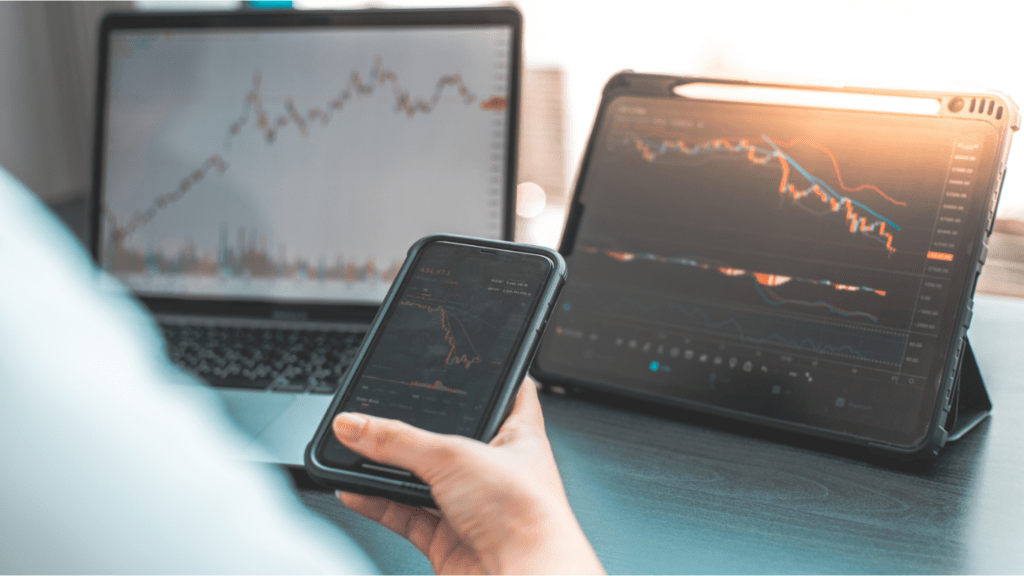Understanding NFTs and Their Functions
Non-Fungible Tokens (NFTs) have gained prominence in the digital art market. NFTs provide a unique method for verifying and owning digital assets, propelling the digital art world.
What Are NFTs?
NFTs, or Non-Fungible Tokens, are unique digital assets verified using blockchain technology. Unlike cryptocurrencies such as Bitcoin or Ethereum, NFTs aren’t interchangeable as each token has distinct information or attributes. They represent ownership or proof of authenticity for various digital assets, such as:
- artwork
- music
- virtual real estate
How Do NFTs Work?
NFTs function by utilizing blockchain technology, which ensures transparency and authenticity.
- When an artist creates digital art, they can mint it as an NFT on a blockchain platform like Ethereum.
- Each NFT has metadata attributes, including the creator’s information, a description of the art, and a unique identifier that distinguishes it from other tokens.
- Blockchain maintains a public ledger of all transactions, so buyers can verify the origin and ownership chain of the digital asset.
- Minting an NFT involves creating smart contracts, which are self-executing contracts with the terms of the agreement directly written into code.
- These smart contracts govern the sale and transfer of NFTs, ensuring that creators receive royalties when their digital art is resold.
- Buyers can purchase NFTs using cryptocurrencies, and ownership transfers occur seamlessly through blockchain networks.
Understanding these mechanisms highlights how NFTs have enabled artists to monetize their digital creations uniquely and securely, solidifying their role in the evolving digital art market.
The Emergence of NFTs in Art
Non-Fungible Tokens (NFTs) have reshaped the art landscape. This revolutionary technology has opened new avenues for artists and collectors.
Historical Context of NFTs in Art
NFTs emerged from blockchain technology, first introduced with Bitcoin in 2009. Early NFT projects like CryptoPunks, launched in 2017, showcased NFTs’ potential in the digital art space.
Digital artists could now create unique tokens representing ownership of their art, moving beyond traditional galleries and auction houses. This innovation fostered a shift, enabling digital artists to gain recognition and revenue.
Key Milestones in NFT Art History
Several key milestones have marked NFT art’s journey. In March 2021, artist Beeple’s “Everydays: The First 5000 Days” sold for $69 million at Christie’s, highlighting NFTs’ mainstream acceptance.
Platforms like Rarible, OpenSea, and Foundation also gained prominence, offering marketplaces for artists and buyers. High-profile NFT drops by celebrities like Grimes and Snoop Dogg further propelled the trend, making NFTs a mainstay in the digital art conversation.
Impact of NFTs on Artists and Creators

NFTs have fundamentally shifted the landscape for artists and creators, providing new opportunities and presenting unique challenges.
Opportunities for Digital Artists
NFTs allow digital artists to monetize their work directly through blockchain platforms. With NFTs, artists earn a larger share of revenue from their creations without intermediaries like galleries or auction houses. For example, when digital artist Beeple sold “Everydays: The First 5000 Days” for $69 million, he directly profited from the sale.
These tokens also enable artists to program royalties into their NFTs, ensuring they receive a percentage of sales each time the artwork is resold. This feature creates sustainable revenue streams, benefitting artists in the long term. Artists like Pak and Josie Bellini have successfully implemented royalties to generate ongoing income.
Additionally, NFTs give artists exposure to a global audience. Digital marketplaces like OpenSea and Rarible have users worldwide, providing creators with unprecedented reach and potential buyers. Artists gain recognition on an international scale, expanding their fan base and increasing their income potential.
Challenges Faced by Artists
Despite the opportunities, NFTs come with challenges. One major obstacle is the volatility of the cryptocurrency market. NFT prices and the value of earnings fluctuate with cryptocurrency values. Artists may see significant changes in their revenue due to market instability.
Environmental concerns also pose a challenge. The energy consumption associated with creating and trading NFTs on blockchain platforms raises sustainability questions. Some artists are hesitant to enter the NFT space due to the ecological impact.
Lastly, artists face issues with copyright and intellectual property (IP). The decentralized nature of blockchain makes it easier for bad actors to create and sell unauthorized copies of works. Artists like Trevor Jones have experienced IP infringement, causing significant distress and financial loss.
NFTs have opened new doors for digital artists while presenting hurdles that they must navigate to fully benefit from this technology.
NFTs and Art Market Economics
Non-Fungible Tokens (NFTs) have transformed the digital art market by creating new valuation and trading paradigms. This impact forces a reevaluation of traditional art market principles.
How NFTs Are Changing Art Valuation
NFTs have introduced a unique way to appraise digital art. Each NFT carries distinct metadata, ensuring scarcity and individual ownership. Buyers consider factors like the artist’s reputation, rarity, and blockchain provenance when valuing a piece. For example, Beeple’s “Everydays: The First 5000 Days” sold for $69 million, reflecting both the artist’s status and the piece’s historic nature.
NFTs also optimize transparency in art transactions. Blockchain records every transaction, allowing buyers to trace an artwork’s history easily. This transparency mitigates fraud and increases buyer confidence, ultimately stabilizing and potentially increasing art valuations.
The Future of Art Trading with NFTs
Art trading evolves rapidly with the advent of NFTs. Traditional auction houses like Christie’s and Sotheby’s now hold NFT auctions, indicating mainstream acceptance. This shift significantly lowers entry barriers for both artists and collectors.
NFT platforms, such as OpenSea and Rarible, provide artists direct access to a global market. This decentralized approach reduces intermediary fees and democratizes art trading. As a result, lesser-known artists can gain recognition and financial support more easily. Blockchain smart contracts also automatically enforce royalty payments, ensuring artists benefit from secondary sales without additional effort.
Environmental concerns and regulatory challenges remain significant. The energy-intensive nature of blockchain technology draws criticism, though some platforms transition to more eco-friendly practices. Regulatory clarity is crucial for ensuring long-term sustainability and legal compliance in NFT art trading.
NFTs signify a monumental shift in art valuation and trading, bridging the gap between digital and traditional art economies. As the technology matures, its integration into the art market will likely yield new opportunities for artists, collectors, and investors alike.
Ethical and Legal Considerations
Navigating the rise of NFTs in digital art involves addressing significant ethical and legal considerations. These issues impact artists, collectors, and platforms in unique ways.
Copyright Issues in Digital Art NFTs
NFTs revolutionize digital art ownership, but they also complicate copyright issues. Ownership of an NFT doesn’t equate to owning the copyright of the underlying artwork unless explicitly stated. Artists may still hold copyrights and control the reproduction of their work. Unauthorized minting of NFTs from existing digital works without the consent of copyright holders has emerged as a significant problem, leading to potential legal disputes and copyright claims.
Explicit contract terms within smart contracts can help mitigate copyright infringement. Artists should leverage platforms offering robust verification and copyright protection services. It’s essential for collectors to conduct due diligence, ensuring the artists’ rights are respected and that the NFTs they purchase are minted legally.
Future Legal Landscapes
The evolving nature of NFTs means the legal landscape must adapt accordingly. Governments and regulatory bodies worldwide are beginning to explore frameworks defining property rights, tax implications, and intellectual property (IP) protections for NFT transactions. Emerging regulations will likely address consumer protections, fraud prevention, and environmental impact concerns.
Legal standards for smart contracts, which automate NFT transactions, need consideration. Clear guidelines on the enforceability of these contracts, the jurisdictional challenges they present, and consumer rights in the event of disputes will shape future regulations. As these frameworks solidify, stakeholders in the NFT ecosystem should stay informed and compliant to navigate the complex legal terrain successfully..


 Parisilyn Cruz has played a pivotal role as an article writer and key contributor in the development of Innov Art Foundry. Her deep passion for the art world is reflected in the insightful and engaging content she creates, covering everything from the latest art trends to in-depth explorations of virtual reality's impact on artistic expression. Parisilyn's writing not only informs but also inspires readers, making complex topics accessible and intriguing for a broad audience.
Beyond her writing, Parisilyn has been instrumental in shaping the direction of Innov Art Foundry. Her contributions have helped to establish the platform as a trusted resource for both seasoned artists and newcomers to the art scene. By blending her creativity with a keen understanding of the art landscape, Parisilyn Cruz has ensured that Innov Art Foundry remains at the forefront of contemporary art discourse, continually providing valuable insights and fostering a vibrant community of art enthusiasts.
Parisilyn Cruz has played a pivotal role as an article writer and key contributor in the development of Innov Art Foundry. Her deep passion for the art world is reflected in the insightful and engaging content she creates, covering everything from the latest art trends to in-depth explorations of virtual reality's impact on artistic expression. Parisilyn's writing not only informs but also inspires readers, making complex topics accessible and intriguing for a broad audience.
Beyond her writing, Parisilyn has been instrumental in shaping the direction of Innov Art Foundry. Her contributions have helped to establish the platform as a trusted resource for both seasoned artists and newcomers to the art scene. By blending her creativity with a keen understanding of the art landscape, Parisilyn Cruz has ensured that Innov Art Foundry remains at the forefront of contemporary art discourse, continually providing valuable insights and fostering a vibrant community of art enthusiasts.